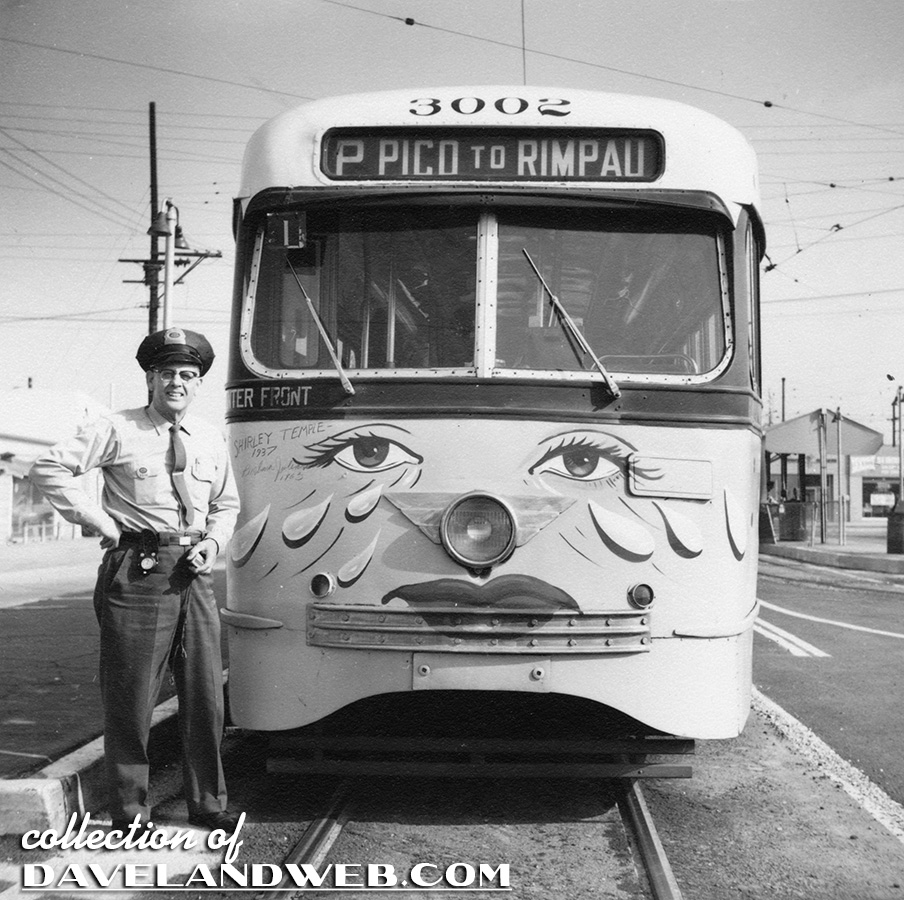
What the heck could a 1963 photo of a Los Angeles railway car have to do with Shirley Temple? Plenty. I saw the listing for this photo and saw Shirley’s autograph scrawled on the front of the car. I checked with Melissa (aka “The Colonel”) and my little runaway train took off.
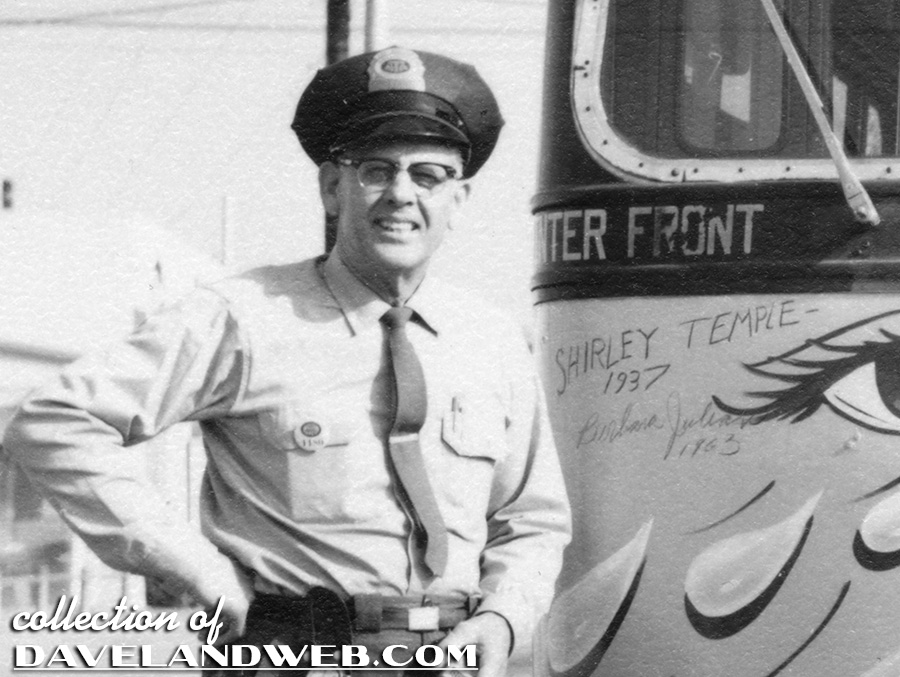
A vintage article shows Shirley walking hand-in-hand with Los Angeles Mayor Frank L. Shaw, the 34th Mayor of Los Angeles in front of the 3002 Los Angeles Railway Company car.
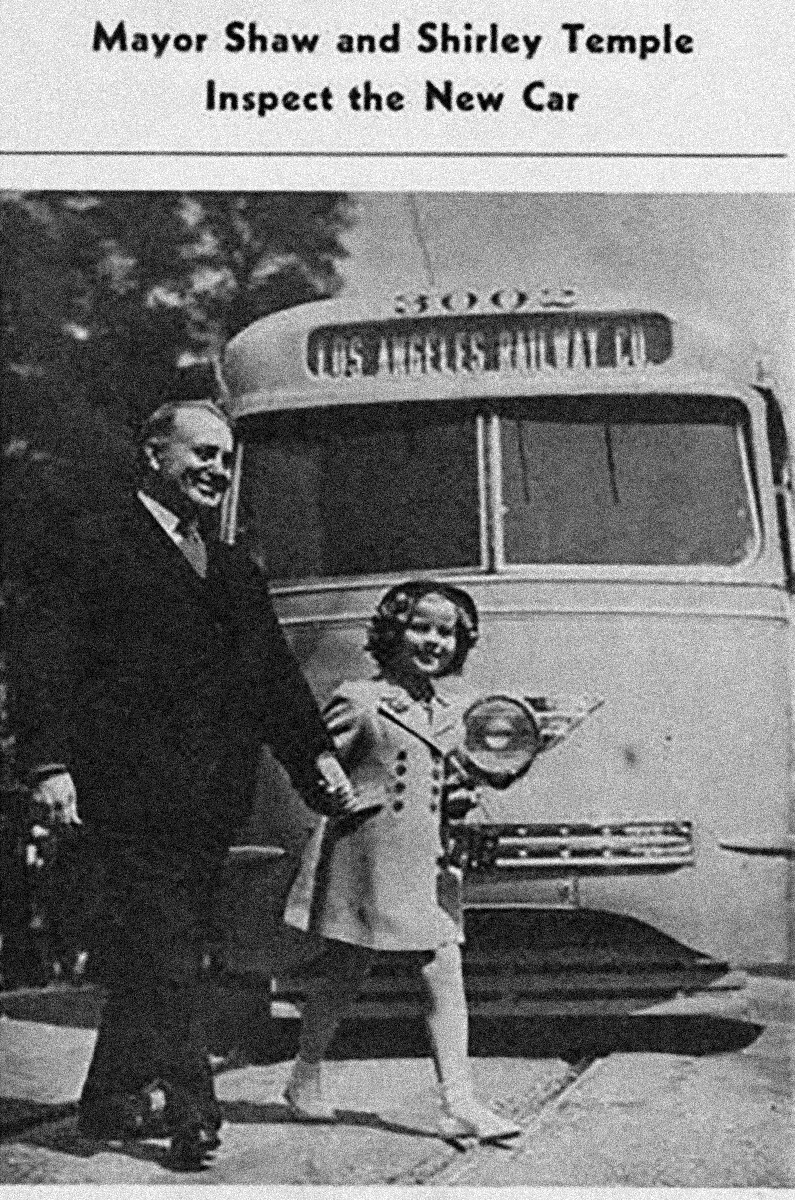
One year later, Shaw “earned” the dubious distinction of being the first Mayor to be recalled from office. Oops. I’m glad Shirley wasn’t tainted by the scandal of this allegedly (he was never officially charged of a crime) corrupt politician. But I digress…
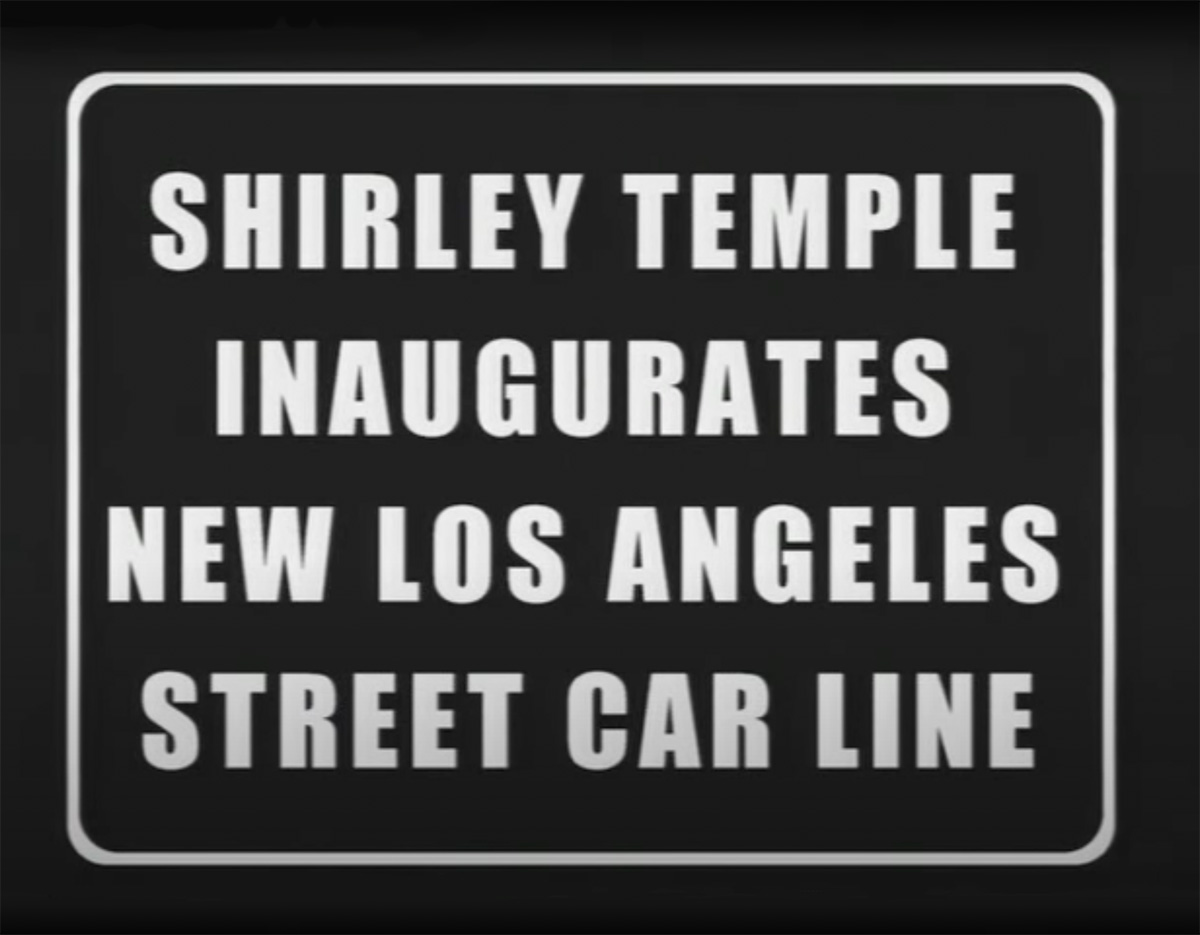
Shirley posed for cameras on March 23, 1937, when she unveiled Los Angeles’ first PCC (President’s Conference Committee) streetcars. San Diego got them first, beating Los Angeles by a few weeks, but the Los Angeles Railway got the press coverage thanks to Shirley.
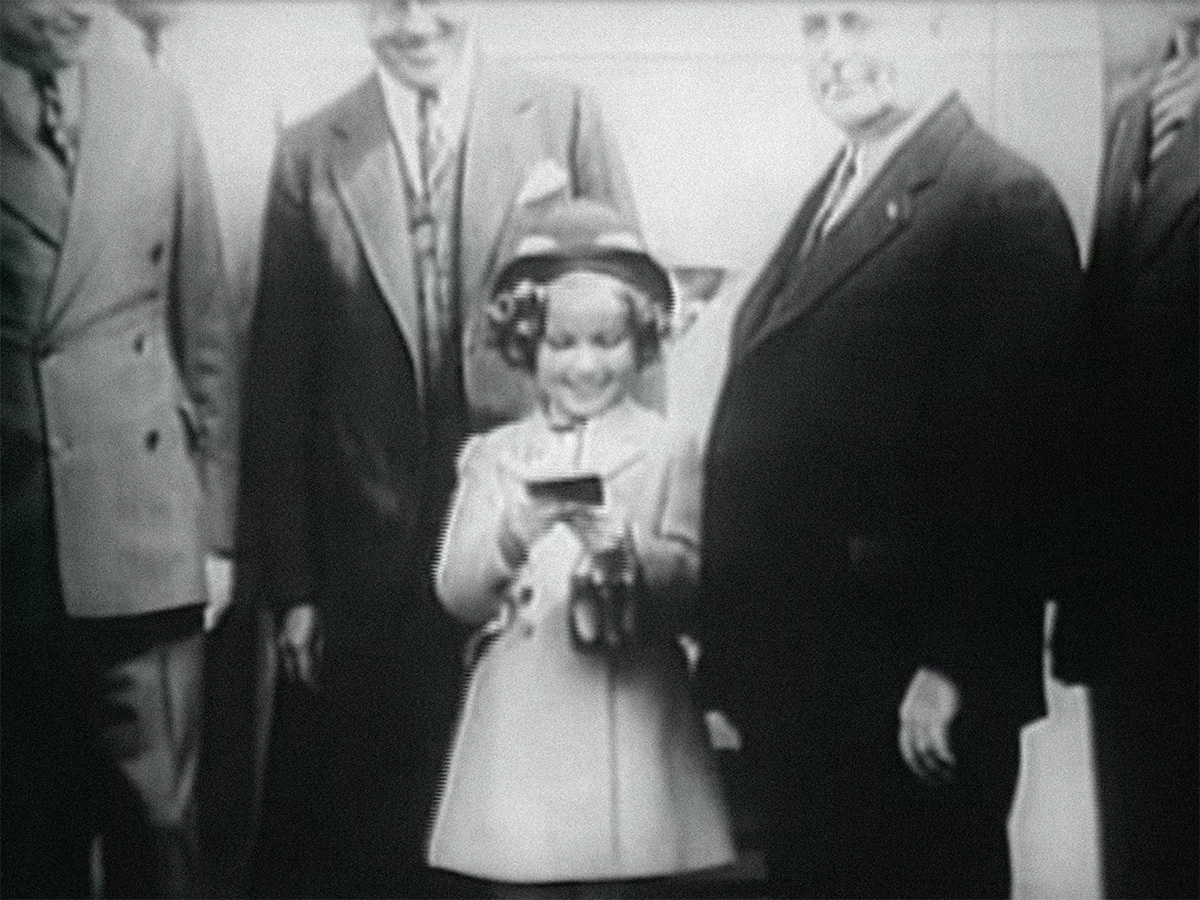
From the Trolley Tuesdays blog:
The first two LARy Type "P" cars rolled into Los Angeles on March 12, 1937, and to say that the city went nuts for their new streetcars was an understatement. Nos. 3001 and 3002 were rush-shipped from St. Louis Car for public relation purposes, as the carbuilder was busy battling a strike at home, and they certainly looked nothing like the Type "H"s that came before them: they were low, curvy, and painted in a two-tone chrome-and-lemon yellow scheme not found on other cars. Such was the uniqueness and eye-catching ability of the PCCs that not even the name "Los Angeles Railway" graced the sides cars, just a number. When car 3002 was on display at City Hall, then-mayor Frank L. Shaw declared that week of March 22-28 "Transportation Week", and took photos with legendary child actress Shirley Temple before the cars were set loose on a special demonstration loop around the city.
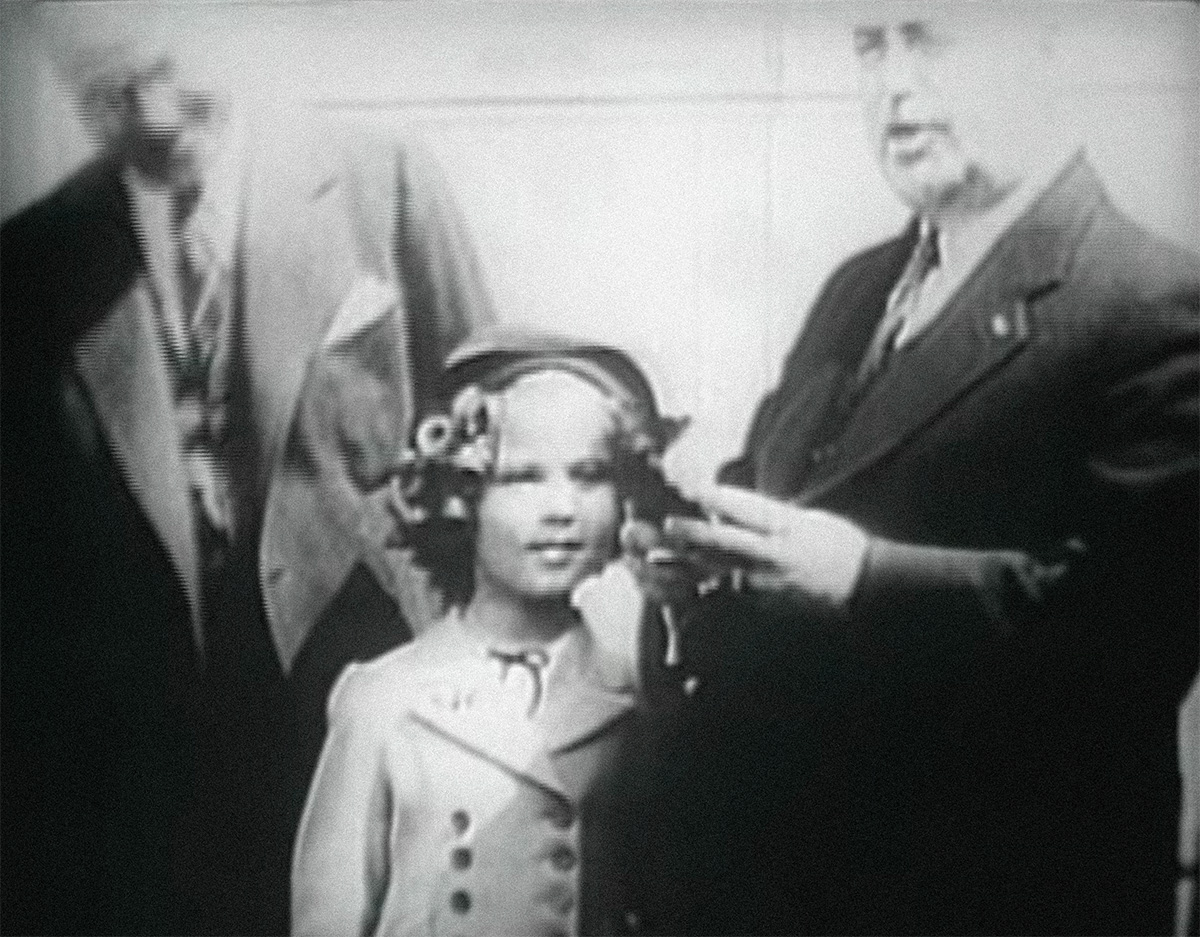
Here’s the newsreel footage from that historic 1937 when Shirley launched the PCC streetcars of Los Angeles.
I found some interesting tidbits about that day on the Primary Resources website:
In the newsreel footage, 8-year old Shirley receives an official “gold card” of the City of Los Angeles. Later, she has been deputized as “Conductor Number One” and takes fare from inaugural riders, including Los Angeles Mayor Frank Shaw and Los Angeles City Attorney Ray Chesebro. Library, Archives and Records staff have viewed this footage countless times, but this week, we caught something we never heard before. At the 0:42 – 0:43 mark, viewers can see one of the dignitaries boarding the streetcar while saying “Shirley, buy yourself a new automobile.” Who was it? We may never know, but it does offer an opportunity to look at the interplay between automobiles and streetcars less than a decade later. In 1945, the controlling interest in Los Angeles Railway was purchased from the Huntington estate by National City Lines, run by the five Fitzgerald Brothers. They renamed it Los Angeles Transit Lines, and at the end of World War II, they sought to substitute buses on most of the existing streetcar lines. One time railroad man E. Roy Fitzgerald had bought up dozens of small and medium sized transit companies in the late 1930s and almost without exception, quickly motorized them. General Motors, Mack Truck, oil and tire companies were among NCL’s stockholders. Could one of the Fitzgeralds been on the scene eight years earlier advising Shirley Temple to buy a car? Probably not. But the true history of Los Angeles Transit Lines and streetcar demise in Los Angeles has been debated for decades. One thing is certain: It is far more complicated than what has been perpetuated in various urban myths as well as in the film “Who Framed Roger Rabbit?” At any rate, it is rather unimaginable that anyone would attend a public transportation event today and suggest that the host buy an automobile, even as a joke!
I found the color shot below of 3002 from its “end of the line” trip on the Pacific Electric website. The sad eyes painted on the front were to signify its impending retirement. 3002 poses with its motorman at the Georgia Street Car House on March 31, 1963, which was the Last Day of Service for the Streetcars of Los Angeles. This sounds like something right out of “Who Framed Roger Rabbit?”
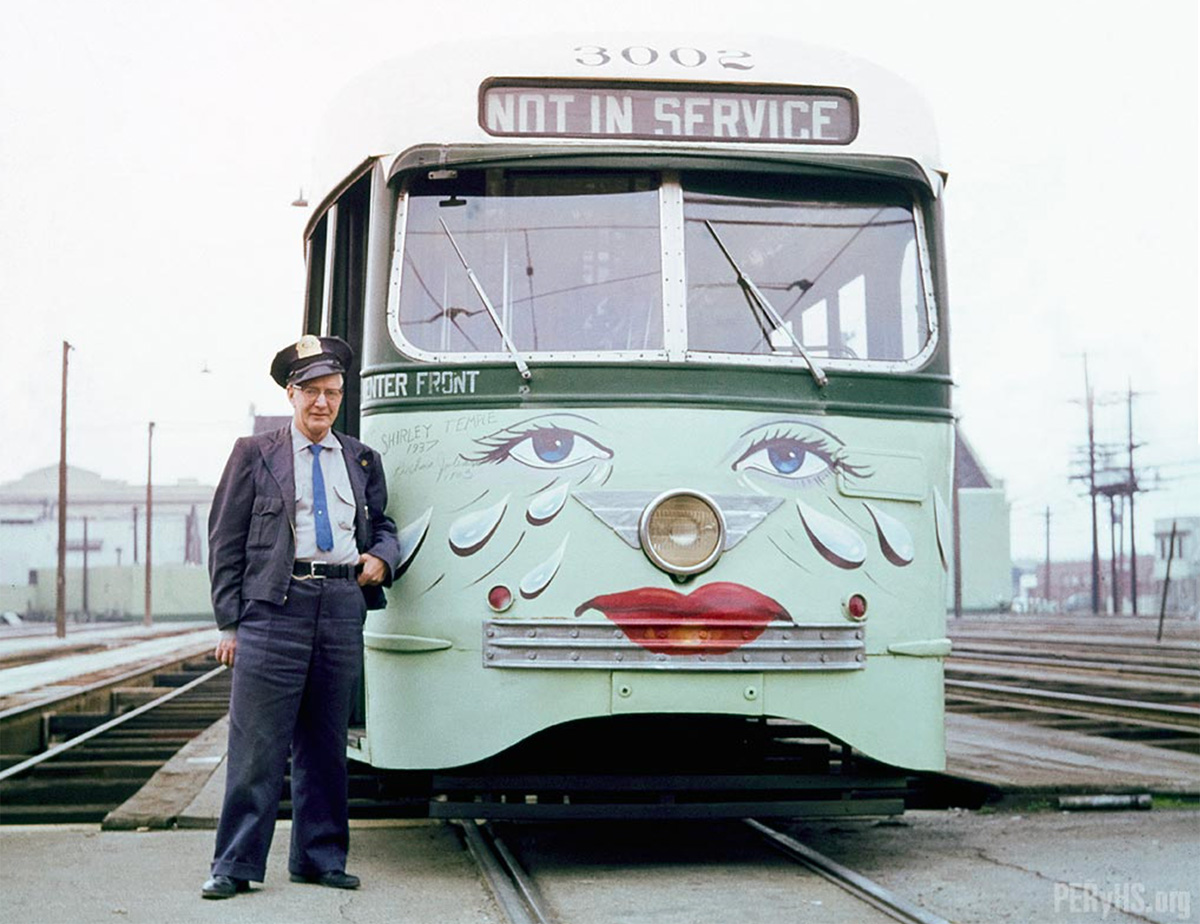
Trolley Tuesdays describes the fate of #3002 in 1963:
Now, at 26 years old, the car was dressed in a paint scheme rendered by the last remaining workers of Division Four in early 1963, with a crying face and a quoted song lyric on her side reading "GOODBYE FOREVER - old sweethearts and pals". No. 3004 was more modestly dressed, with black bunting adorning her front. From sunrise to sunset, 70 PCC cars made the hard and emotional journey to Vernon Yard, with those assembled being moved into place by hand-held stingers. By 4PM, Nos. 3004 and 3002 finally arrived in the yard and, soon after, the last powerhouse was shut down.
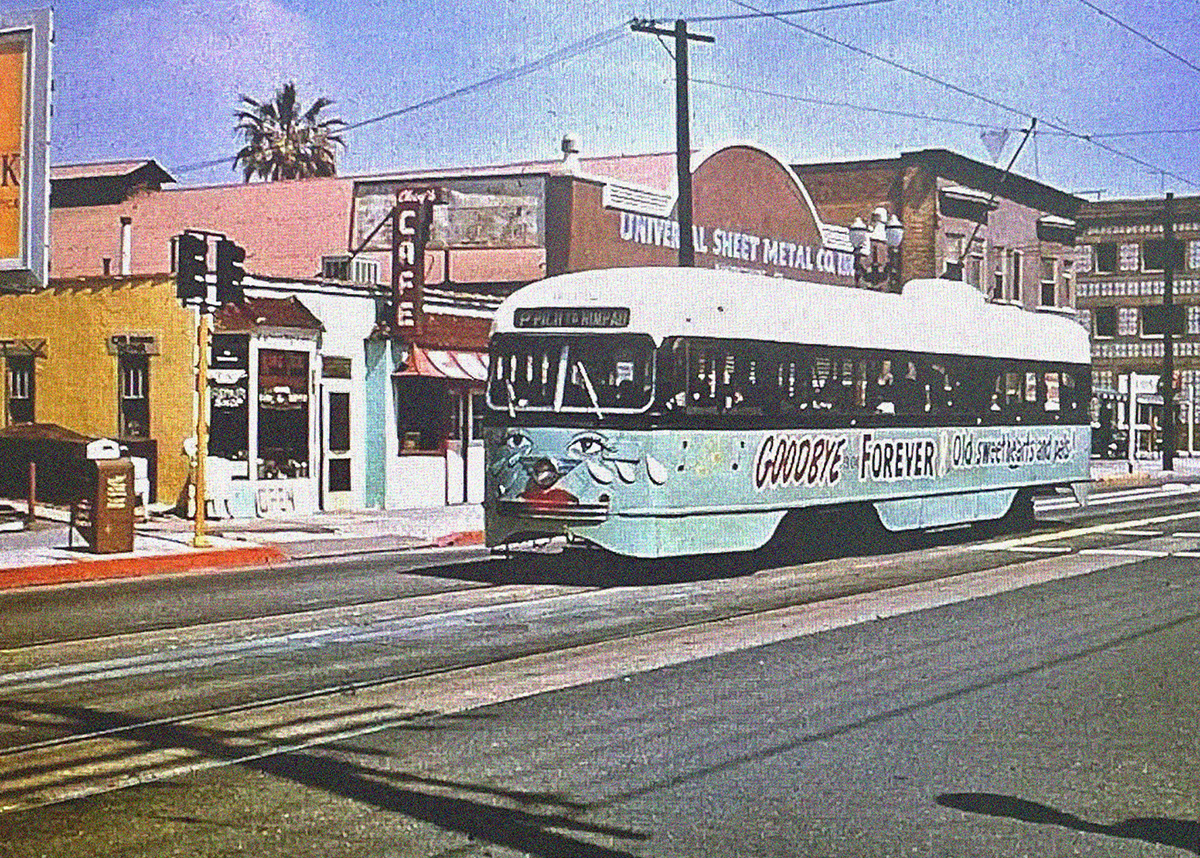
While I don’t know whether the scrawl on the front was actually written by Shirley in 1937 or part of the 1963 decor, according to the Trolley Tuesdays website, it appears that #3002 was sold off and shipped to Cairo, Egypt.
That’s one road trip I can skip.
See more photos at my main website.

3 comments:
Hey Dave. I was told that this streetcar is owned by the Southern California Railway Museum in Perris, CA.
Last time I was there I want able to see it. I have Ridden on it in the past.
I just checked their website which lists their collection; it shows the 3001, but not the 3002, which is the one that Shirley christened.
I wonder why it would be shipped to Egypt? The specific value of 3002 is the only reason I can think of. Would a trolley car with a fake signature have significant enough value to be shipped across the globe? Maybe. I'd like to think that the buyer had this validated before buying/shipping.
Post a Comment